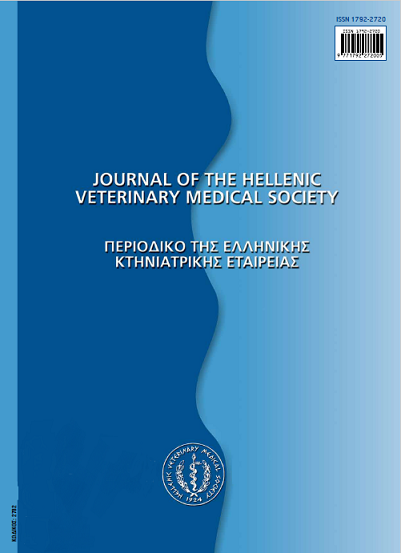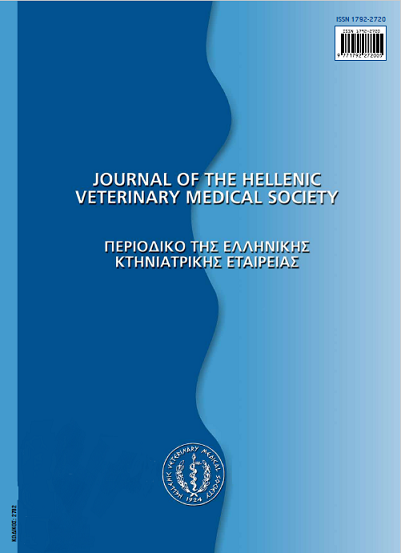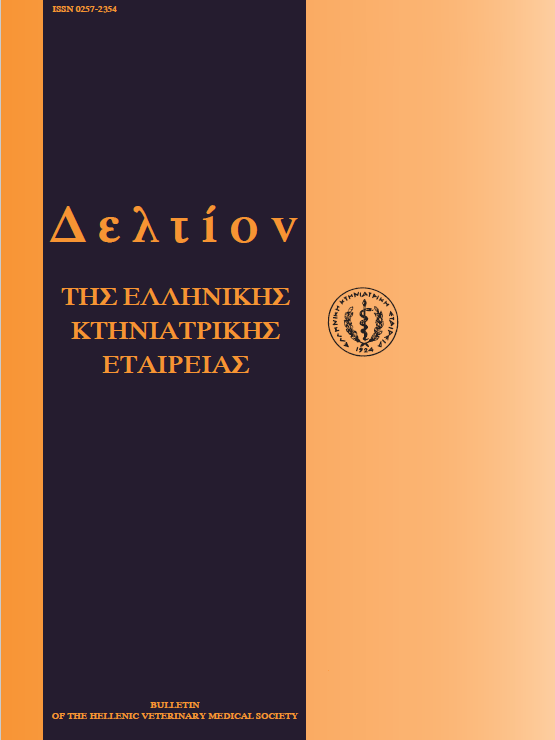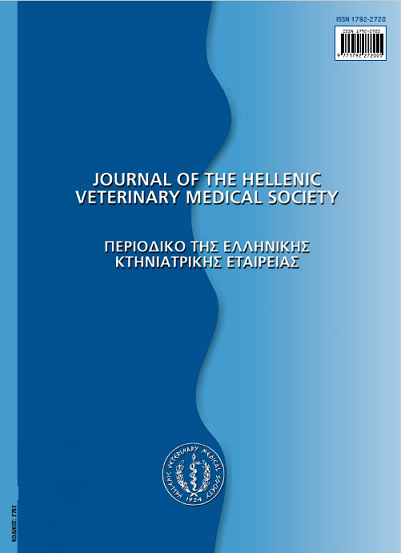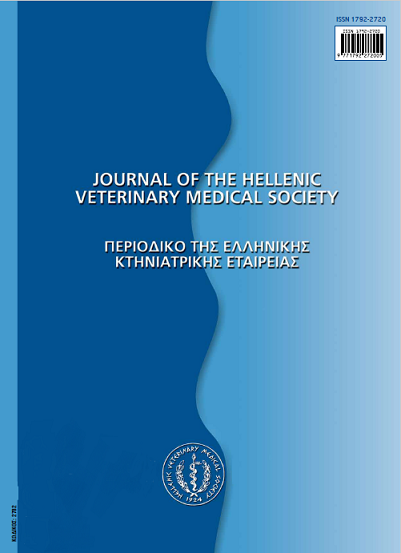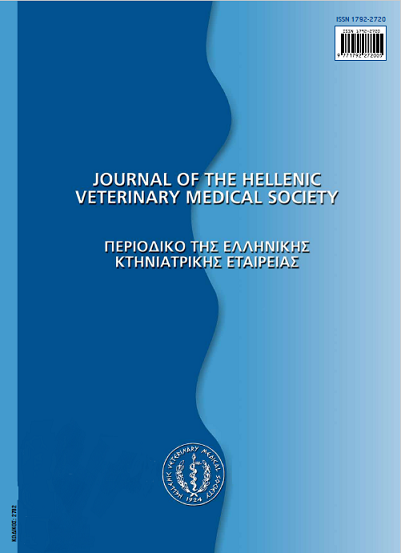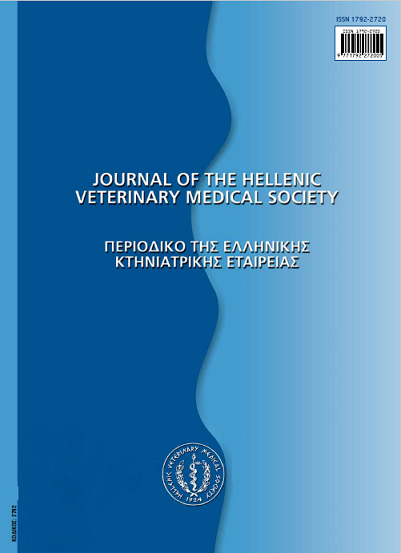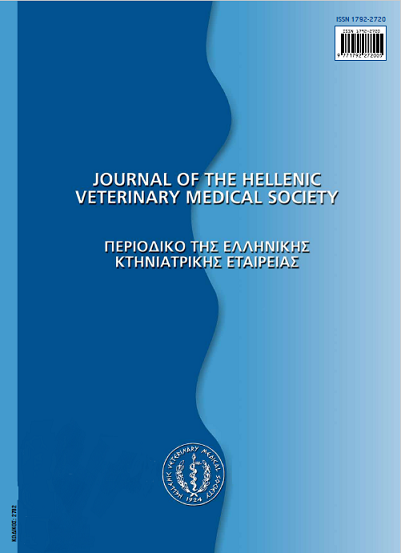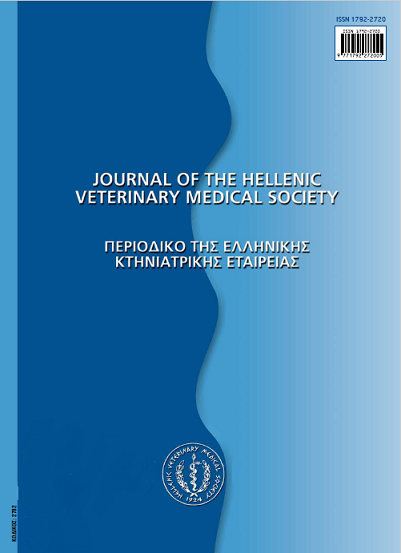Prevalence of infection of broiler chickens with motile salmonellae
Abstract
The results of a five-year epidemiological survey for the evaluation of motile salmonella infection in broiler chickens are reported in the present study. Three to four-week-old birds from 184 flocks, raised in several areas of Northern Greece, were examined bacteriologically. Fifty-five out of the 184 flocks were asymptomatic and the birds were presented for preventive examination, whereas the rest 129 flocks suffered from various diseases. Bacteriological examination of caecal contents from at least ten birds of each flock was performed. Samples from the viscera were also examined bacteriologically. Clinical signs and lesions - when present – were correlated with the isolation of salmonella in the flock. According to the results of this survey, 5.9-20% of the flocks were infected. Higher incidence was noticed in other European countries. Furthermore, no considerable difference in the incidence of infection between asymptomatic and diseased flocks was observed. In conclusion, salmonellae were more easily isolated from the caecal contents than from the viscera.
Article Details
- Zitationsvorschlag
-
IORDANIDIS (Π. ΙΟΡΔΑΝΙΔΗΣ) P., GEORGOPOULOU (Ι. ΓΕΩΡΓΟΠΟΥΛΟΥ) I., GEORGIADIS (Γ. ΓΕΩΡΓΙΑΔΗΣ) G., & BOUGIOUKLIS (Π. ΜΠΟΥΠΟΥΚΛΗΣ) P. (2017). Prevalence of infection of broiler chickens with motile salmonellae. Journal of the Hellenic Veterinary Medical Society, 55(2), 107–112. https://doi.org/10.12681/jhvms.15159
- Ausgabe
- Bd. 55 Nr. 2 (2004)
- Rubrik
- Research Articles
Authors who publish with this journal agree to the following terms:
· Authors retain copyright and grant the journal right of first publication with the work simultaneously licensed under a Creative Commons Attribution Non-Commercial License that allows others to share the work with an acknowledgement of the work's authorship and initial publication in this journal.
· Authors are able to enter into separate, additional contractual arrangements for the non-exclusive distribution of the journal's published version of the work (e.g. post it to an institutional repository or publish it in a book), with an acknowledgement of its initial publication in this journal.
· Authors are permitted and encouraged to post their work online (preferably in institutional repositories or on their website) prior to and during the submission process, as it can lead to productive exchanges, as well as earlier and greater citation of published work.

